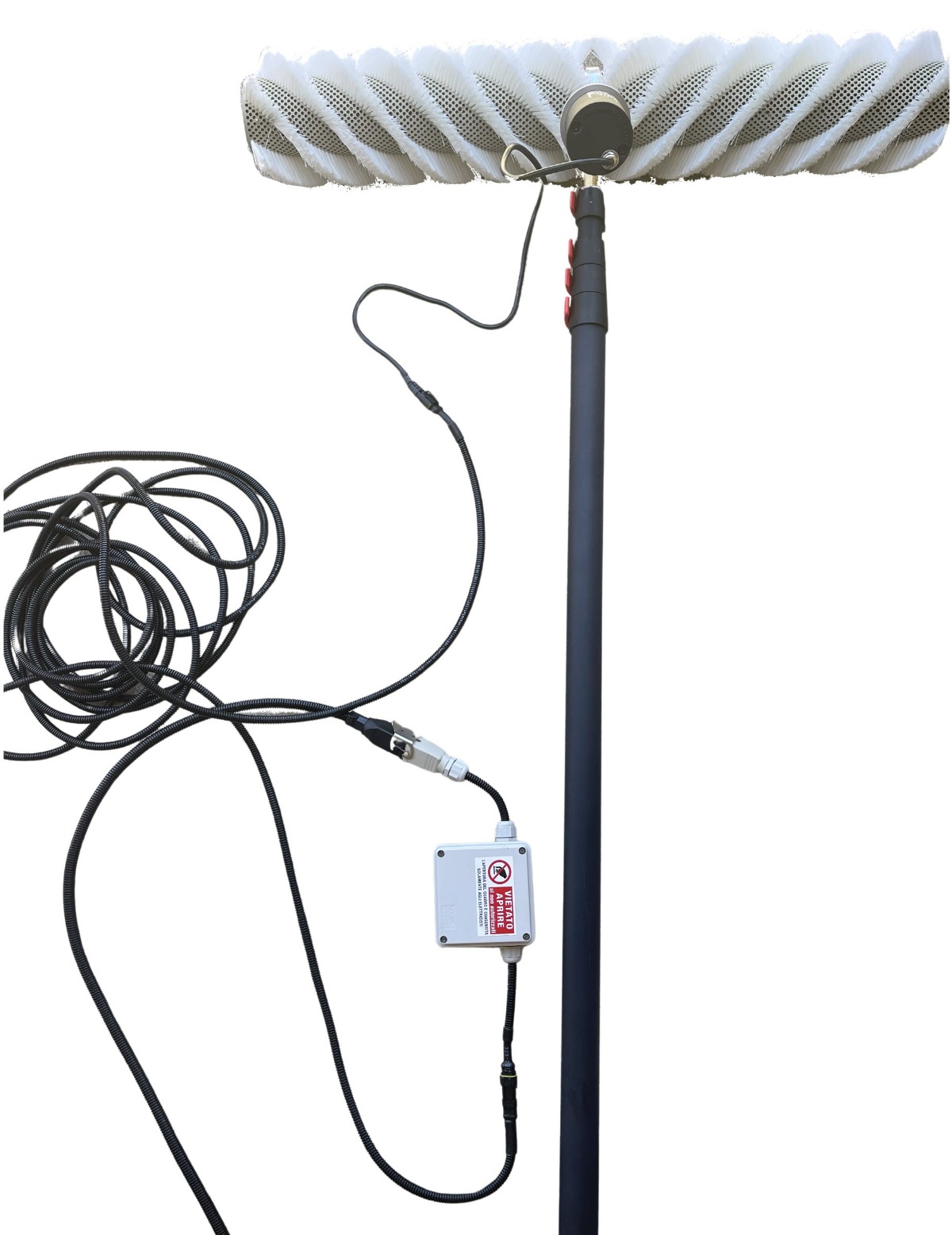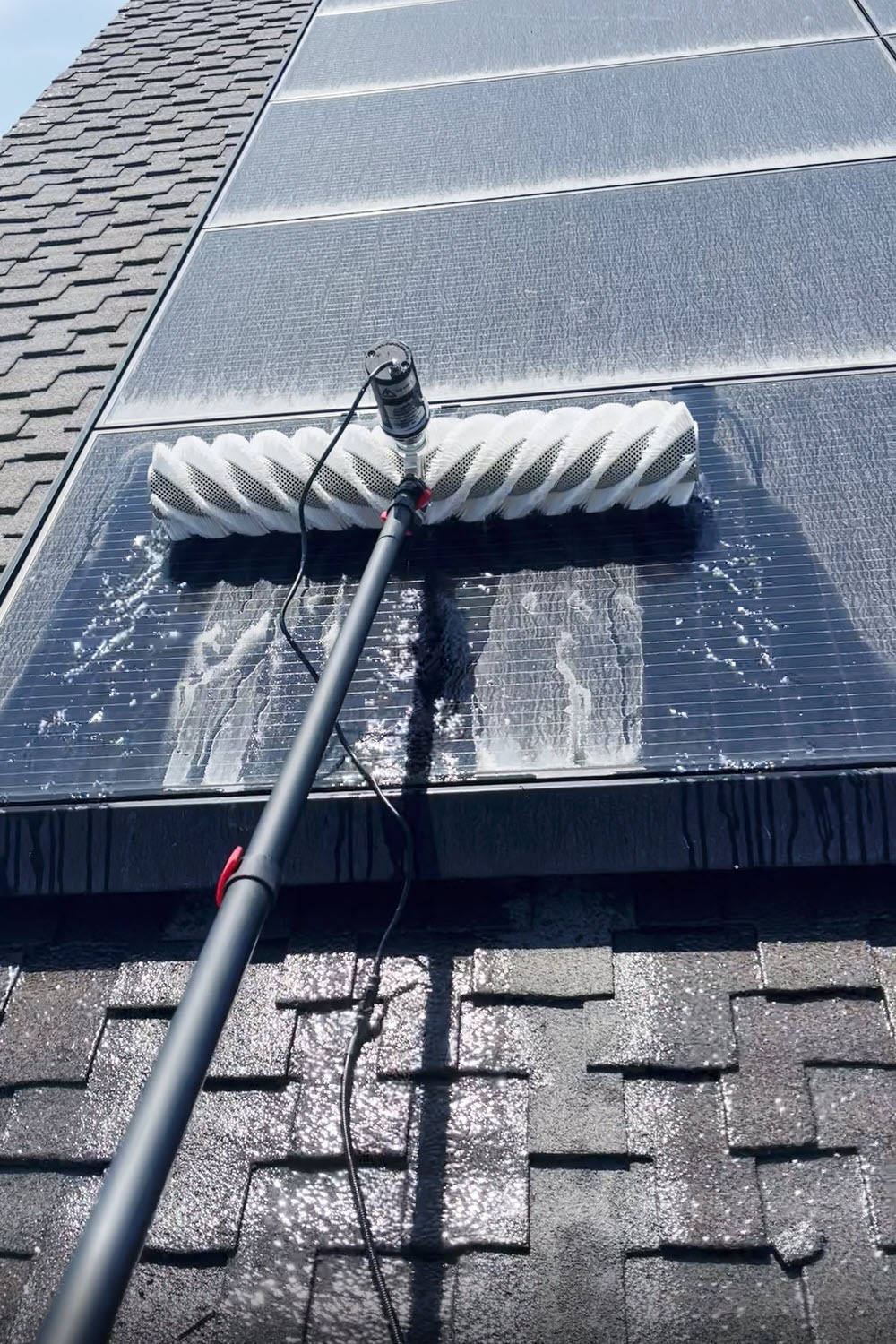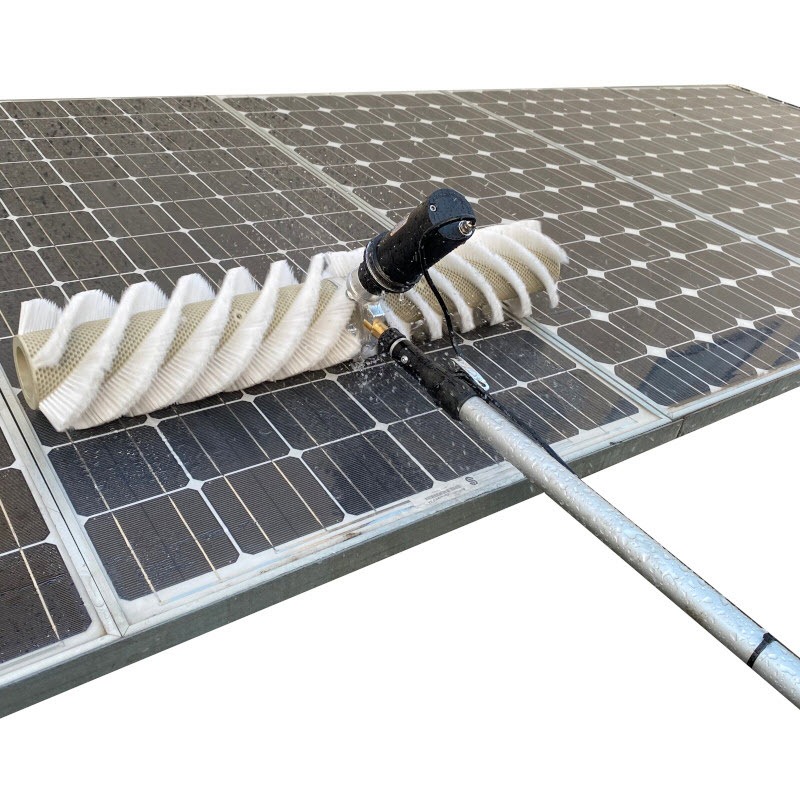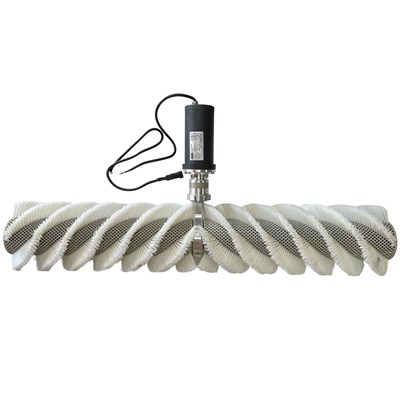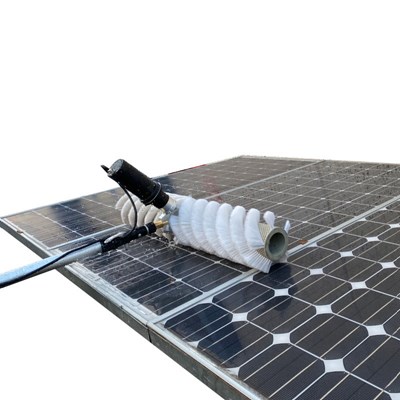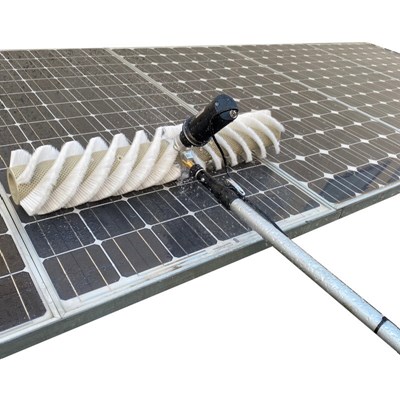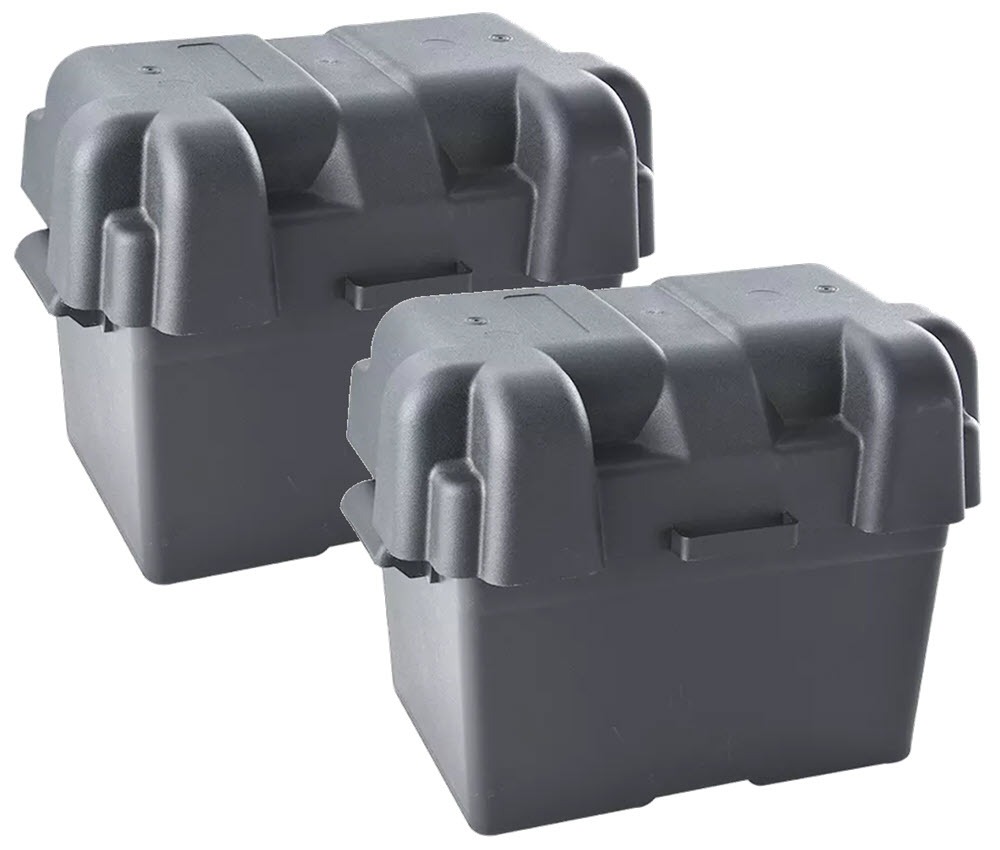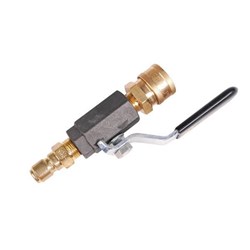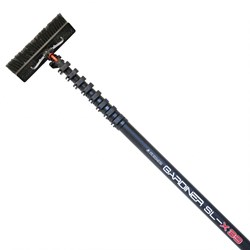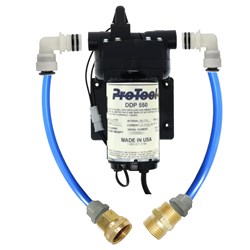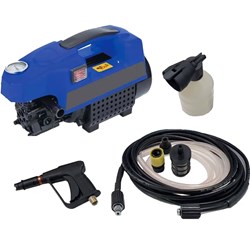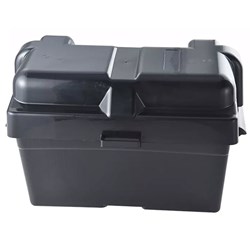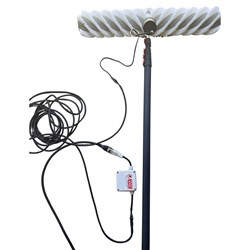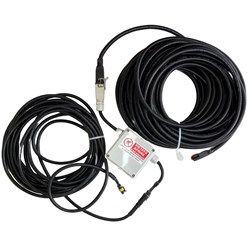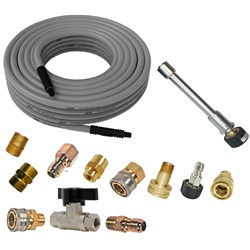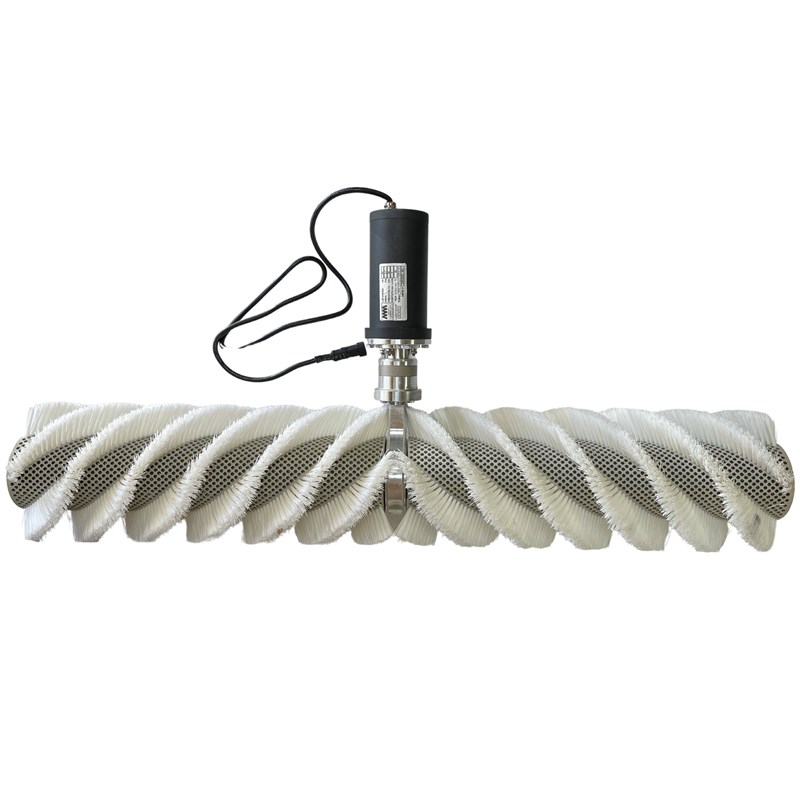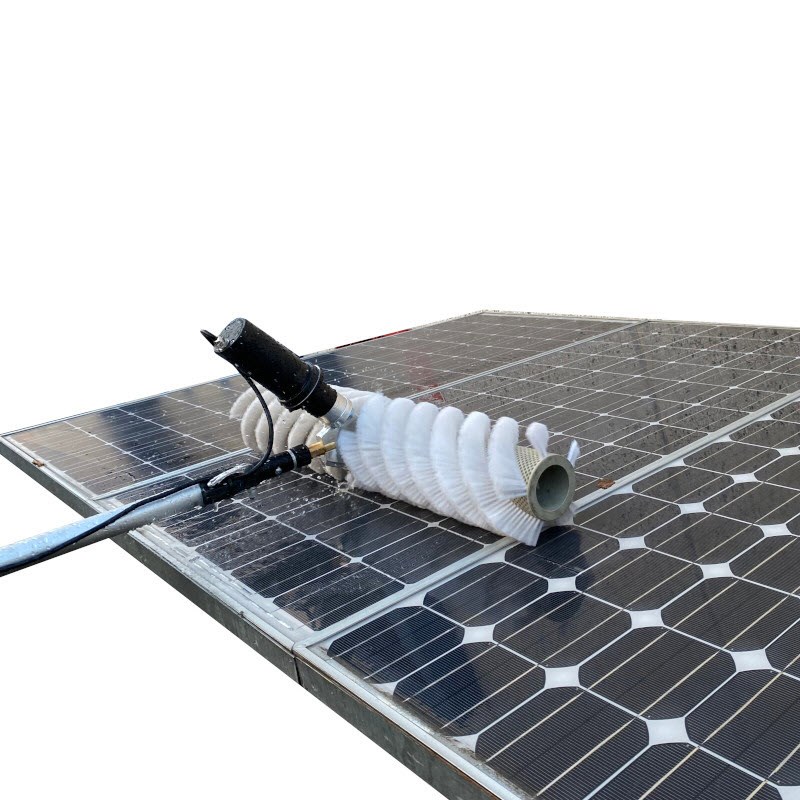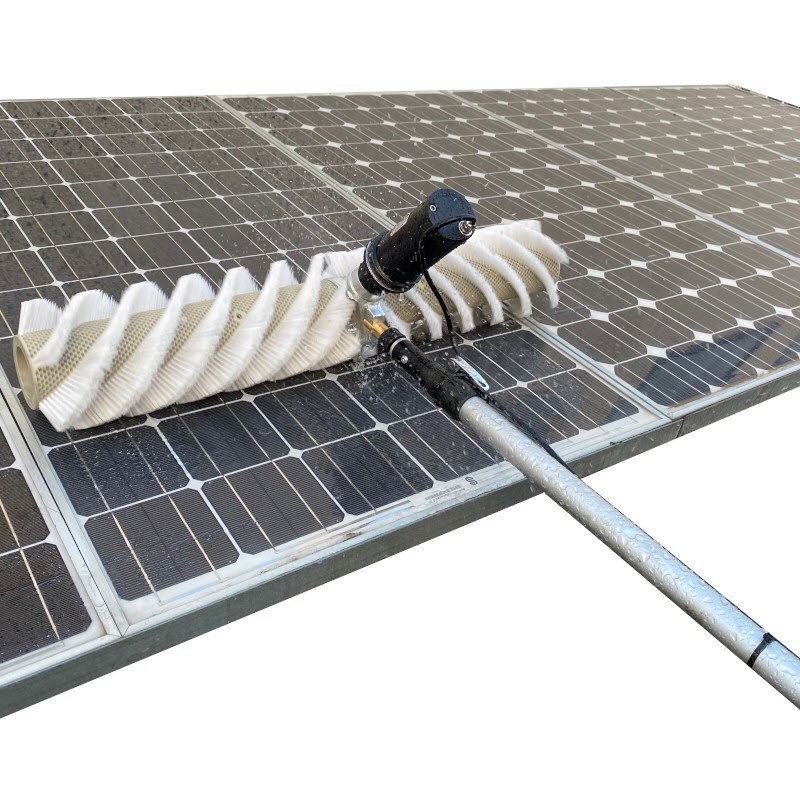ProTool Rotary Brush 32 in (80 cm) 24v Electric Powered
Quick Overview
- Designed to clean Solar Panels, Glass Atriums, Glass Porticos
- It is a mobile, hand-controlled scrubbing brush designed to be controlled by an operater from 5 to 25 feet away
- Electric powered brushes save considerable time compared to traditional waterfed pole brushes
- Requirements: 24v Battery system and 1.7 to 2.5 gallons per minute clean water supply be sure to order the Cable Kit to connect the brush to the batteries
- Powered by 24v Power Source this Rotary Brush can be used with tap water pressure or the feed water can be boosted using a wash pump or boost pump
Show More
$2,887.65
$3,302.00
Rotary Brush 32 in (80 cm) Electric Powered (24v)
For Cleaning Large Surfaces, solar Panels, Atrium Glass, large flat surfaces.
- 24v Power Source at 8amps
- 1.5 to 2.5 Gallons per minute consumption
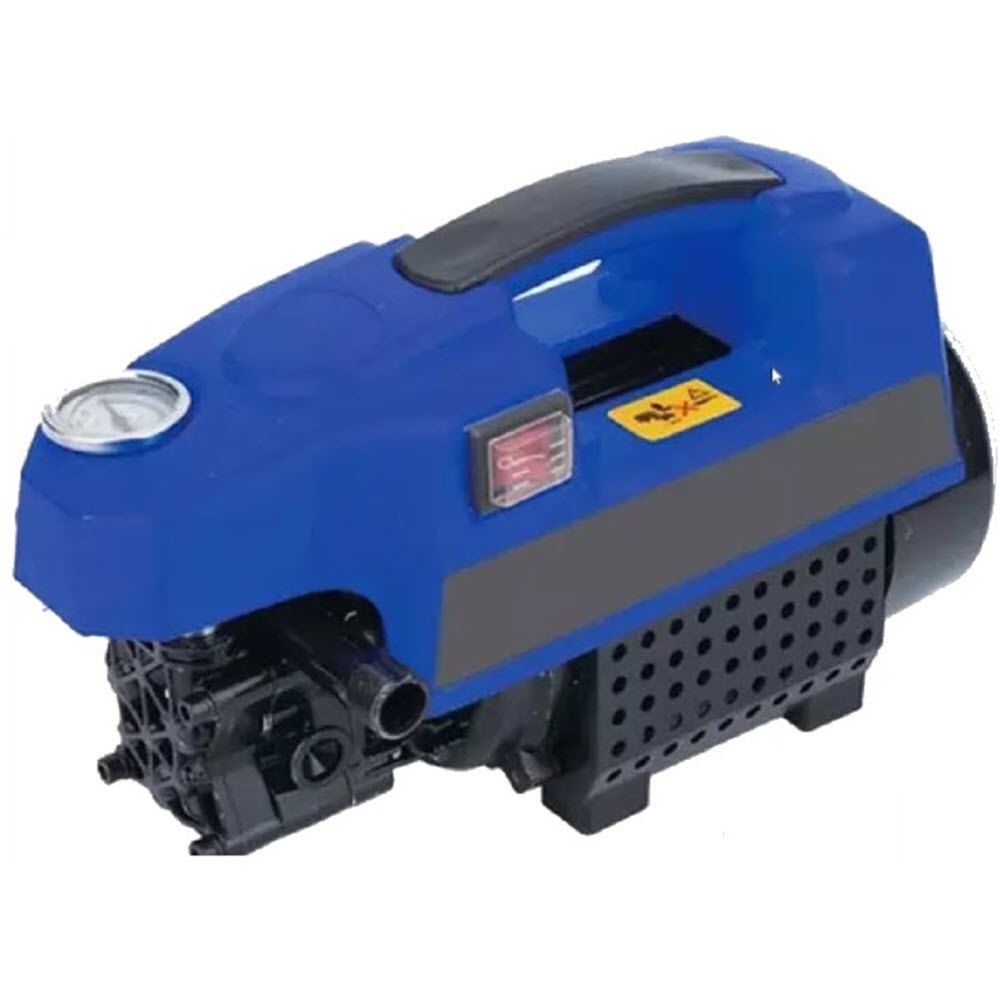
For 110V 1.7GPM Wash Sprayer and offers efficient water use while cleaning, two can be joined to get more water flow.
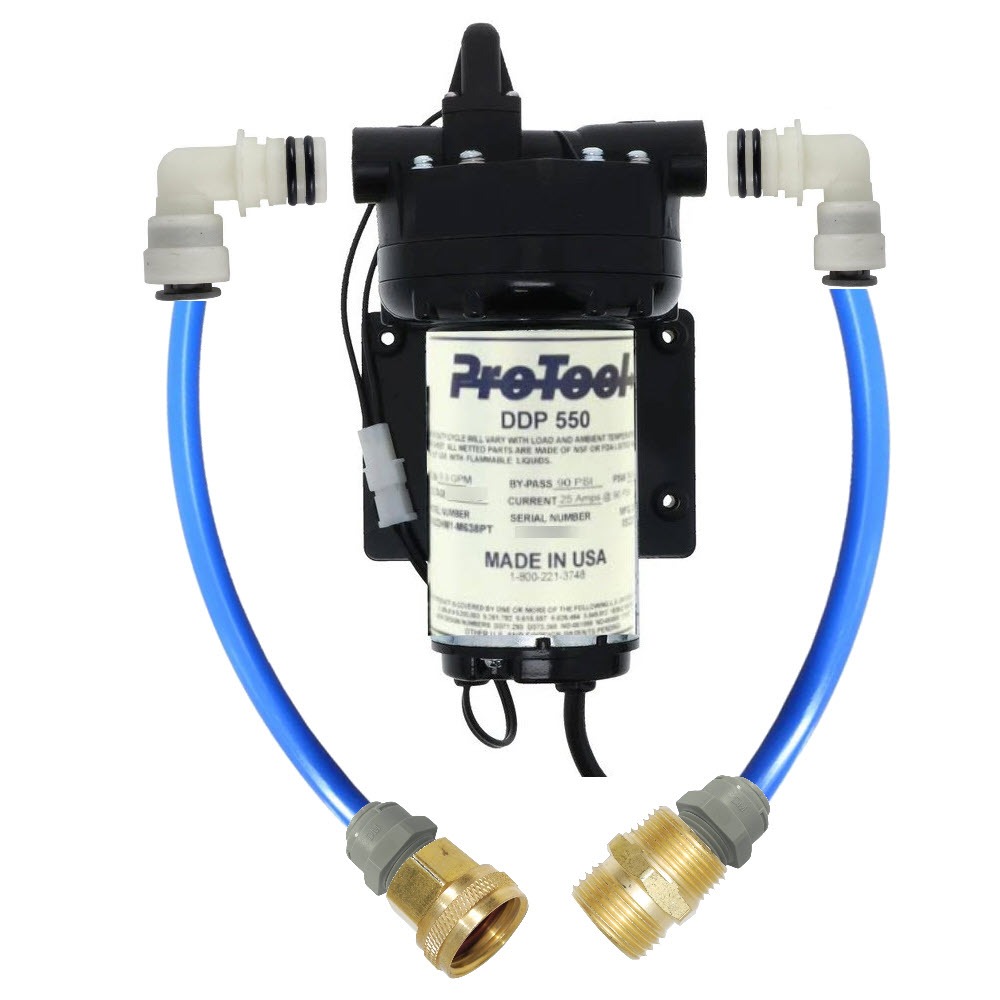
Where 110v Power is not available use 1 or 2 of our 150-0857 12v Pumps depending on your water flow needs, each can flow about 2.5 gpm. 150-0851
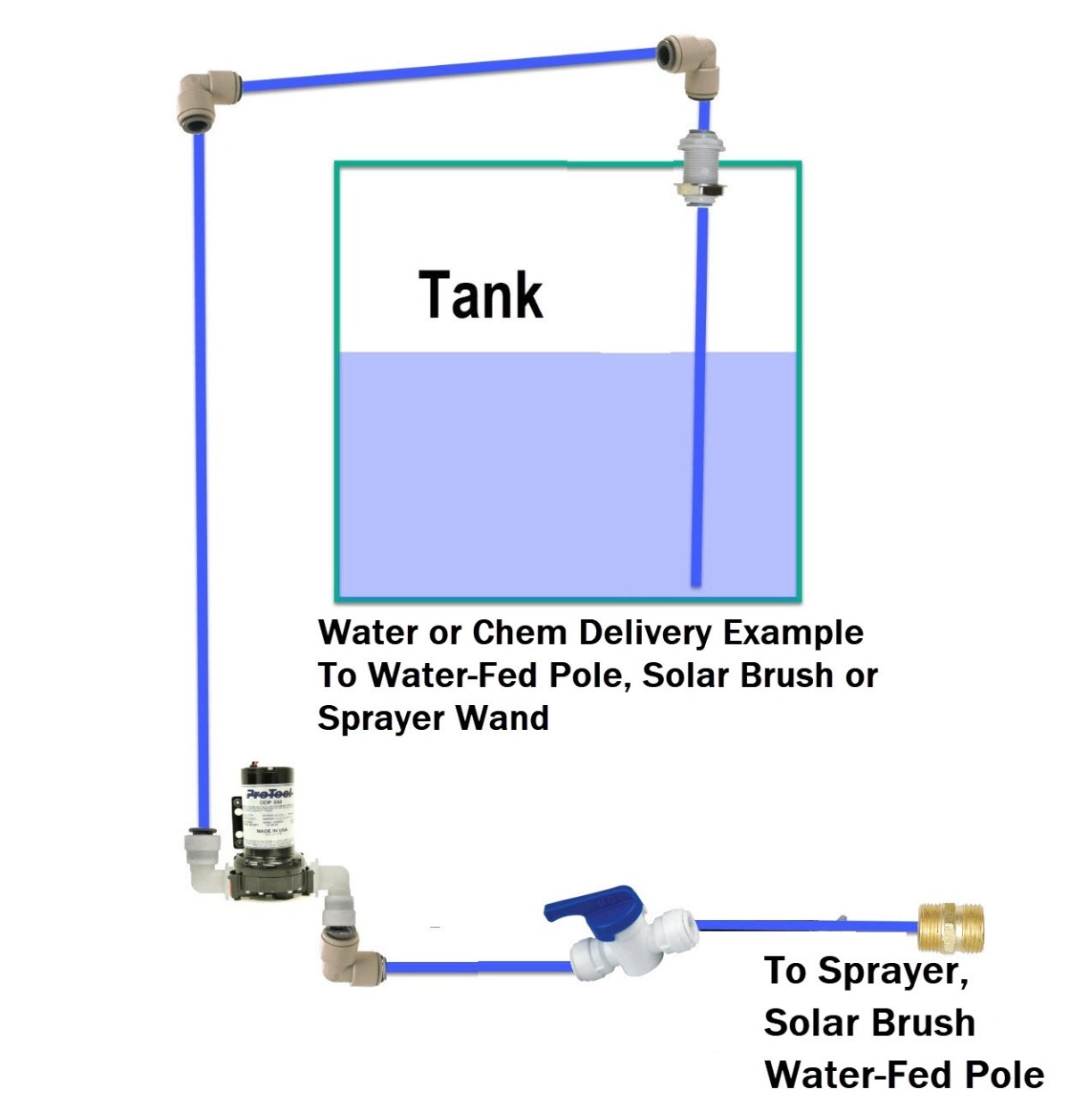
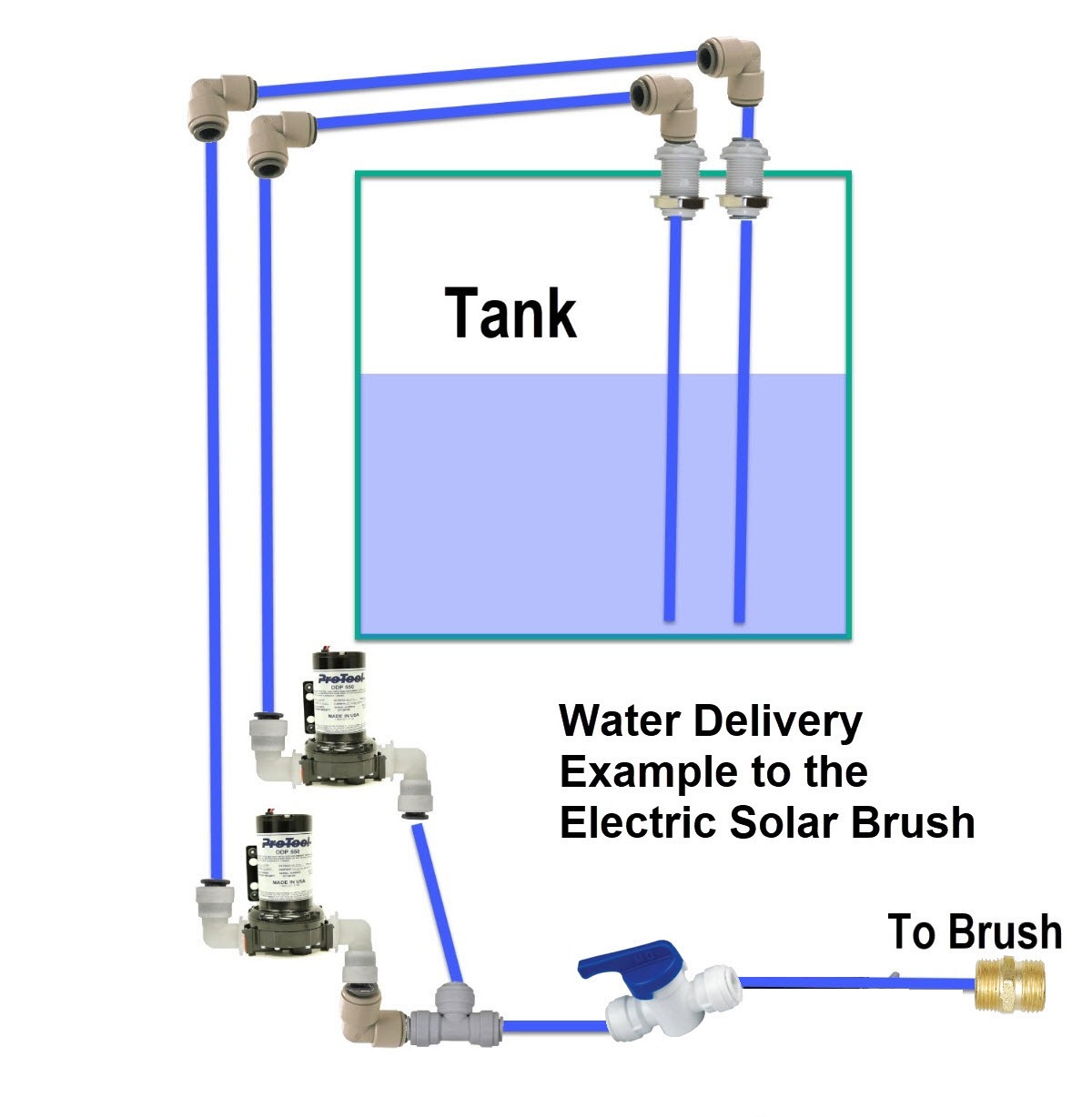
Example Hose Connection for Water Fed pole and Garden Hose connection 74-3623
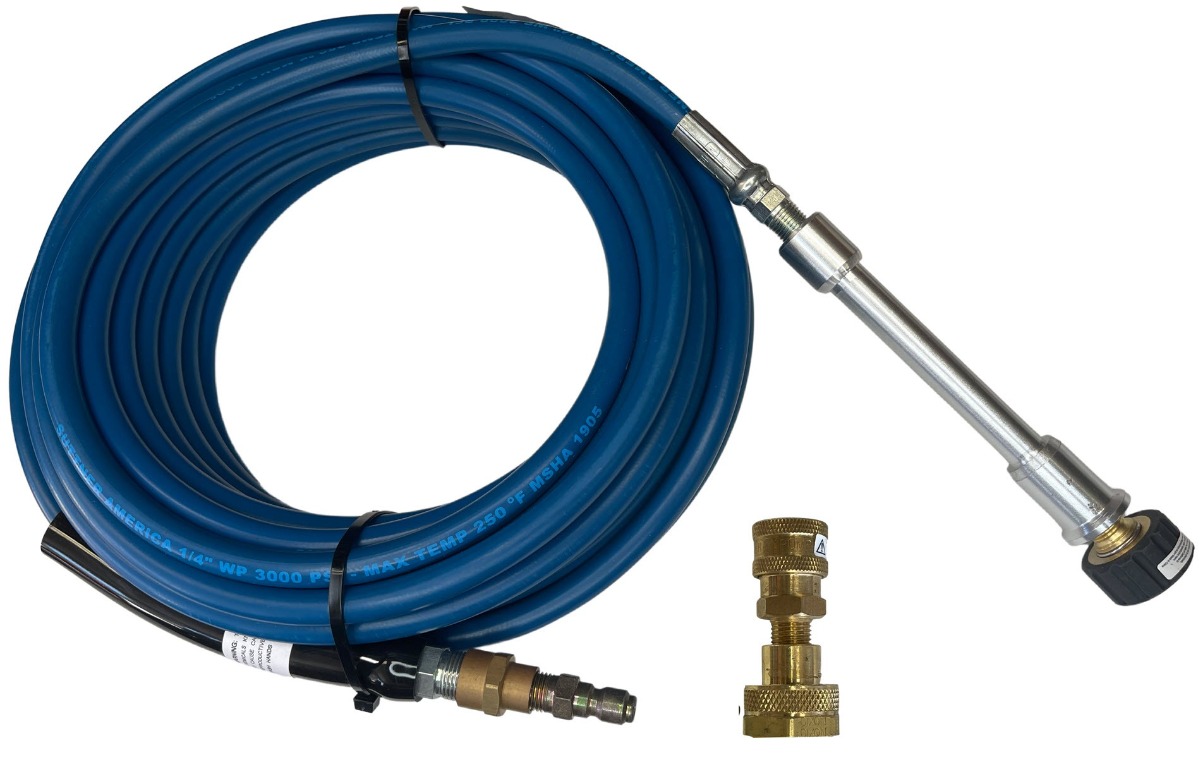
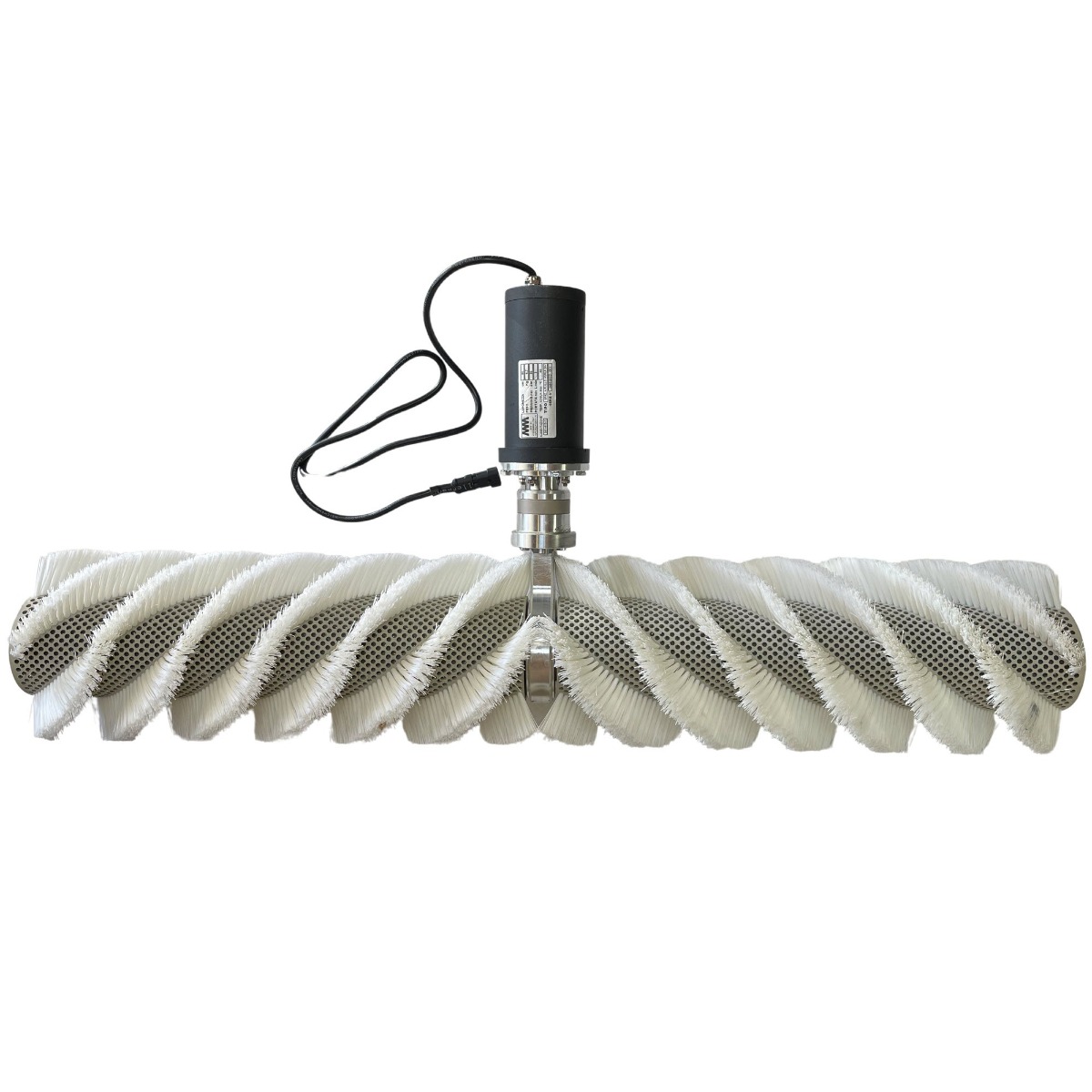
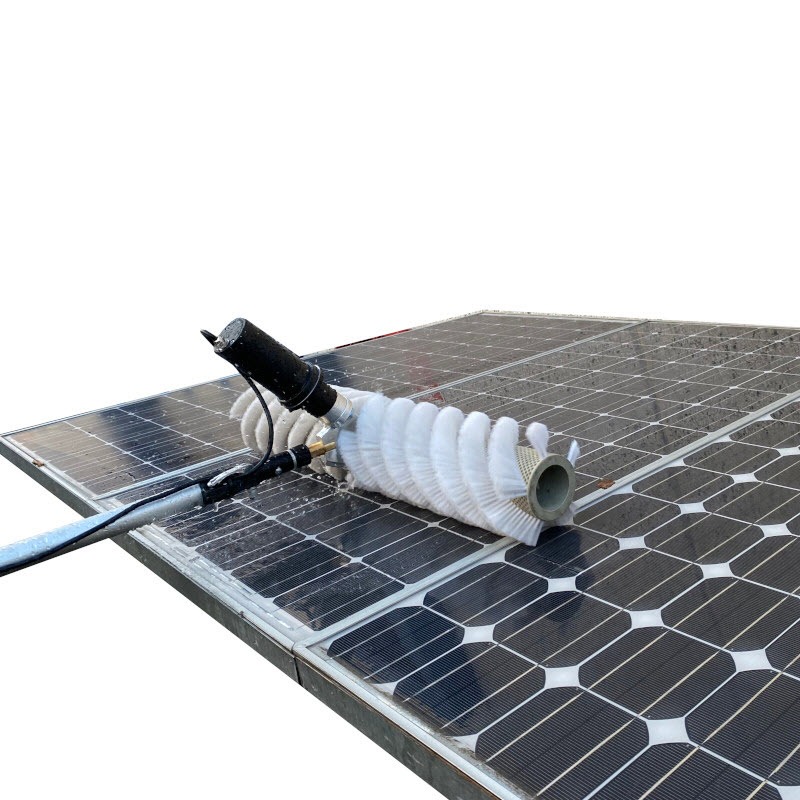
We recommend the Gardiner SLX Pole for supporting and using this rotary brush. The first section is removed to insert the brush support and hose
Either:
the SLX 27 (less 5ft for 22ft of reach) 155-4275
or the SLX 39ft (Less 5ft offers 34ft or reach) 155-4391
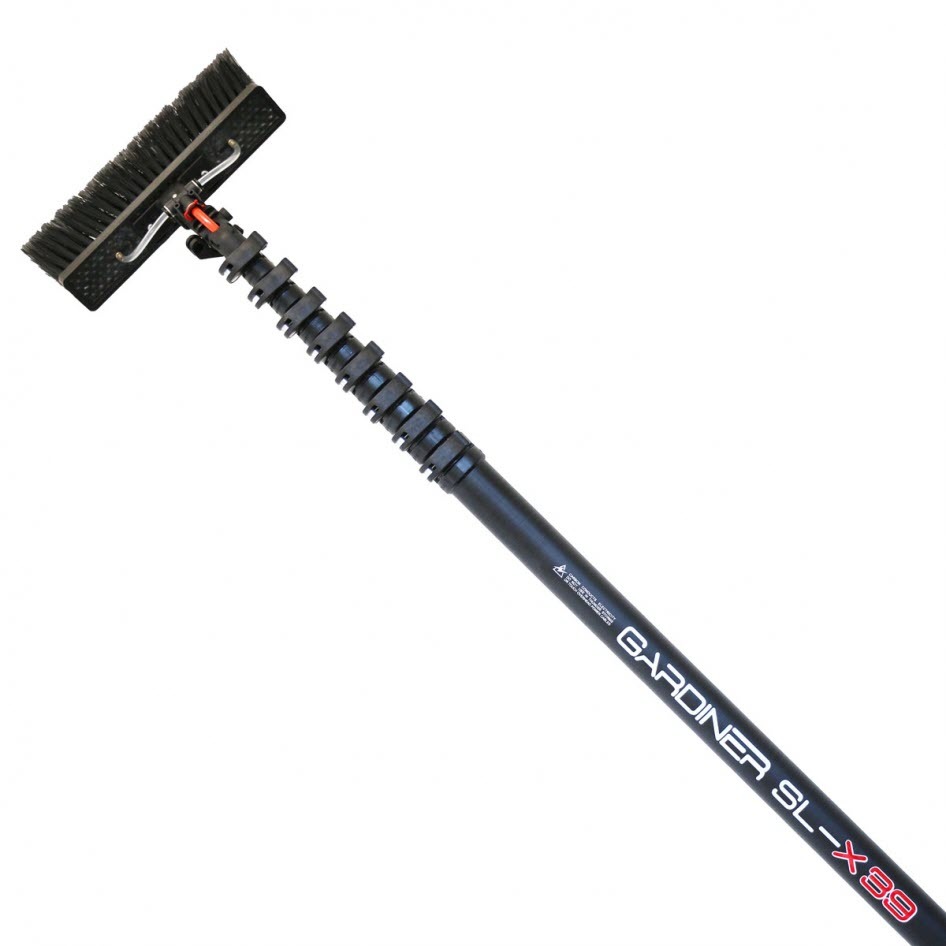
Consider the complete Kit if you do not have a pole in your posession. 159-1202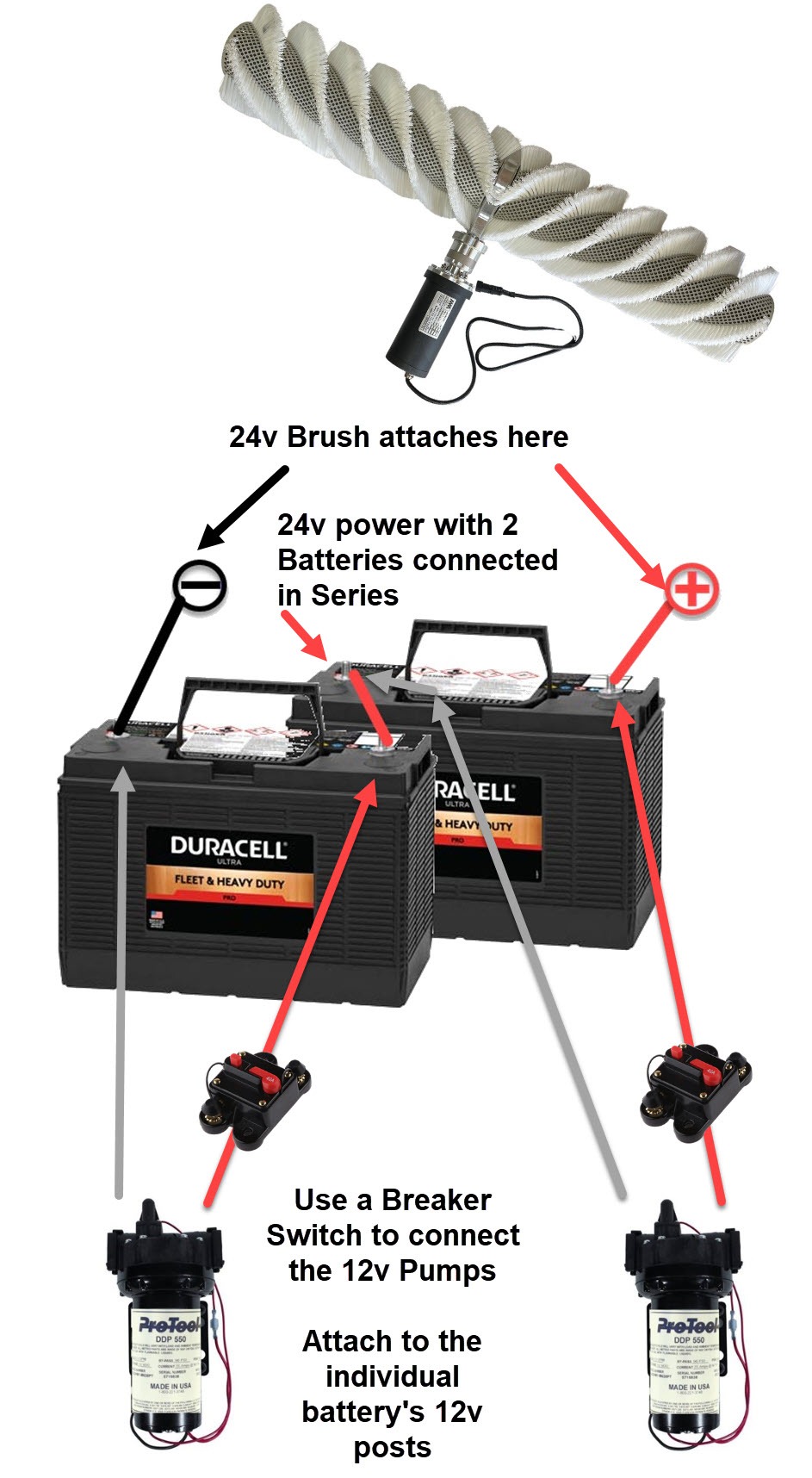
Powering the 24v Brush with a Battery Setup
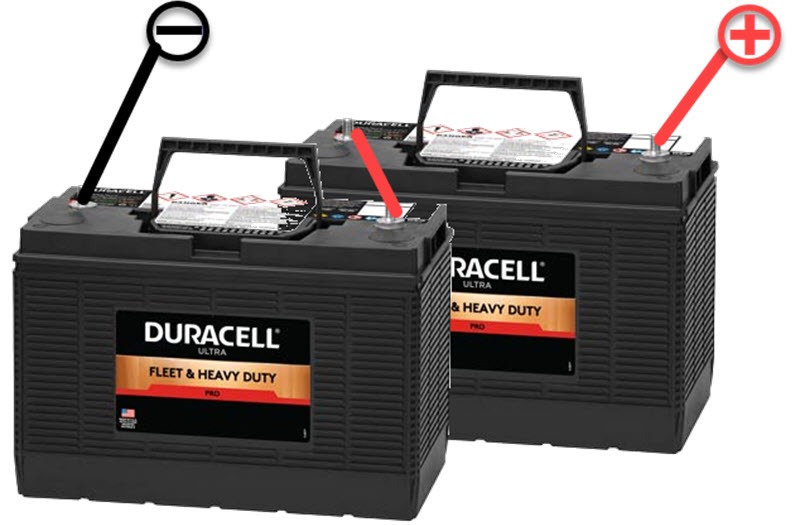
Two 12v Batteries can be wired in Series
This will create a 24v circuit for running the brush
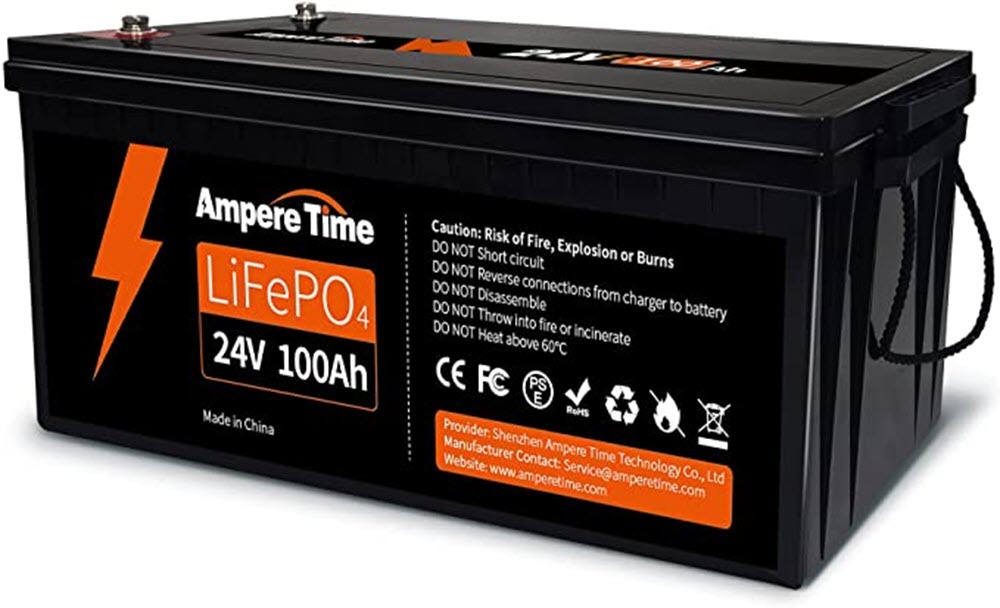
24v Batteries are commonly available
This LifePO battery will last longer than a lead acid battery
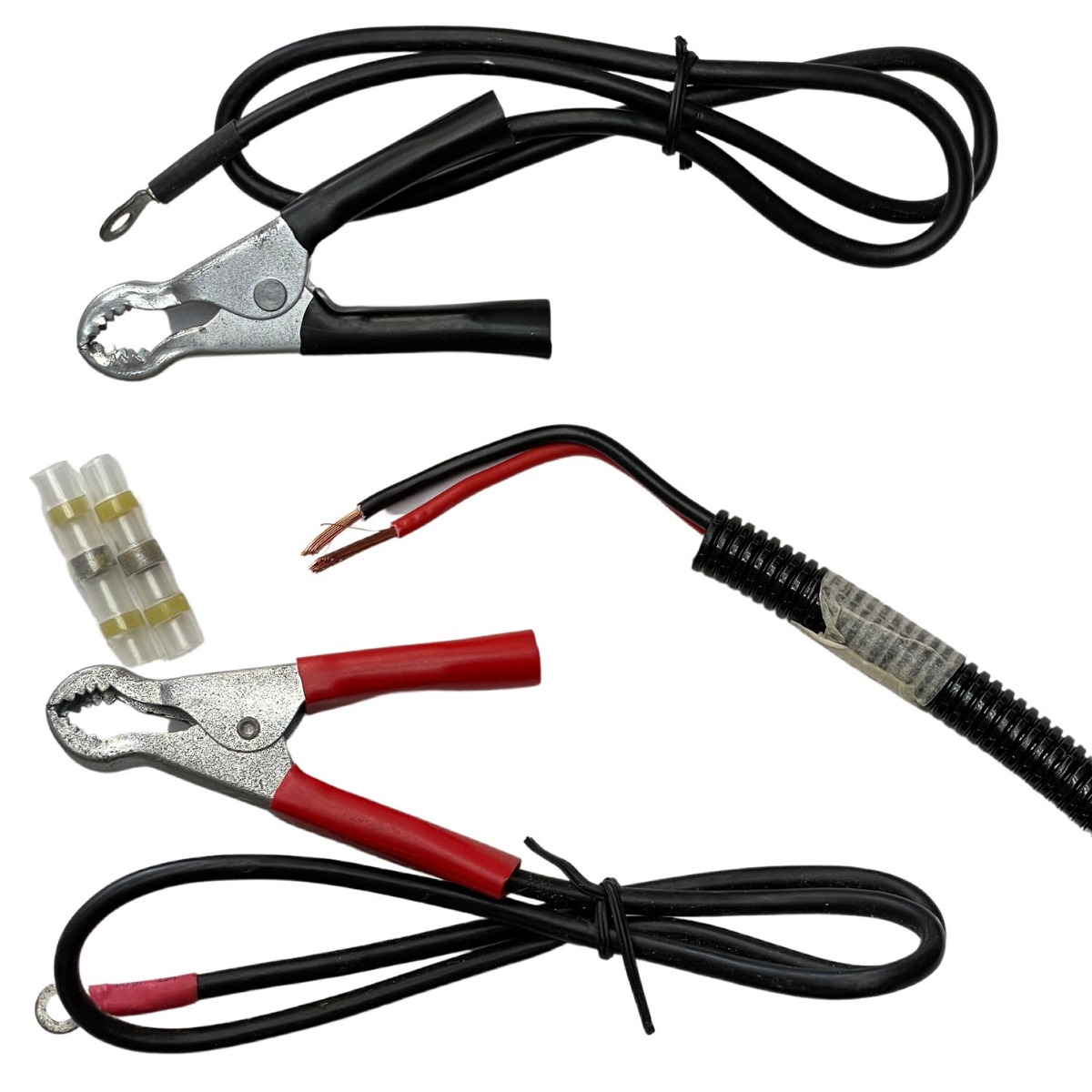
A Clipped connector to a 24 battery would allow for easy removal of the battery for charging
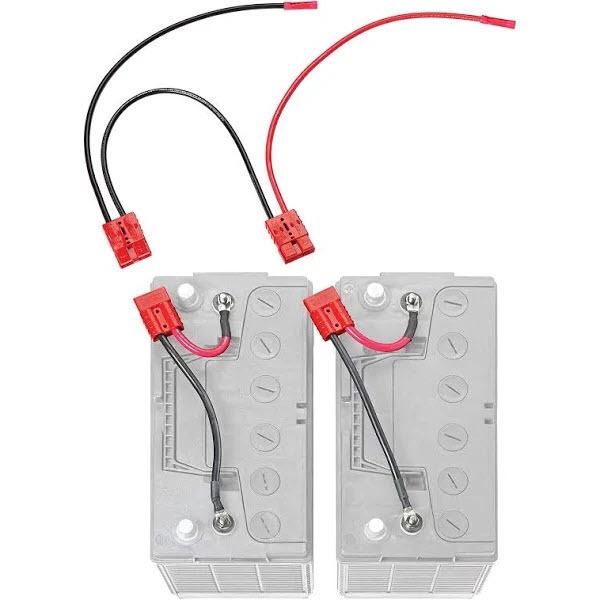
Wiring Kits are available to ease the wiring of two 12v batteries into 24v circuit
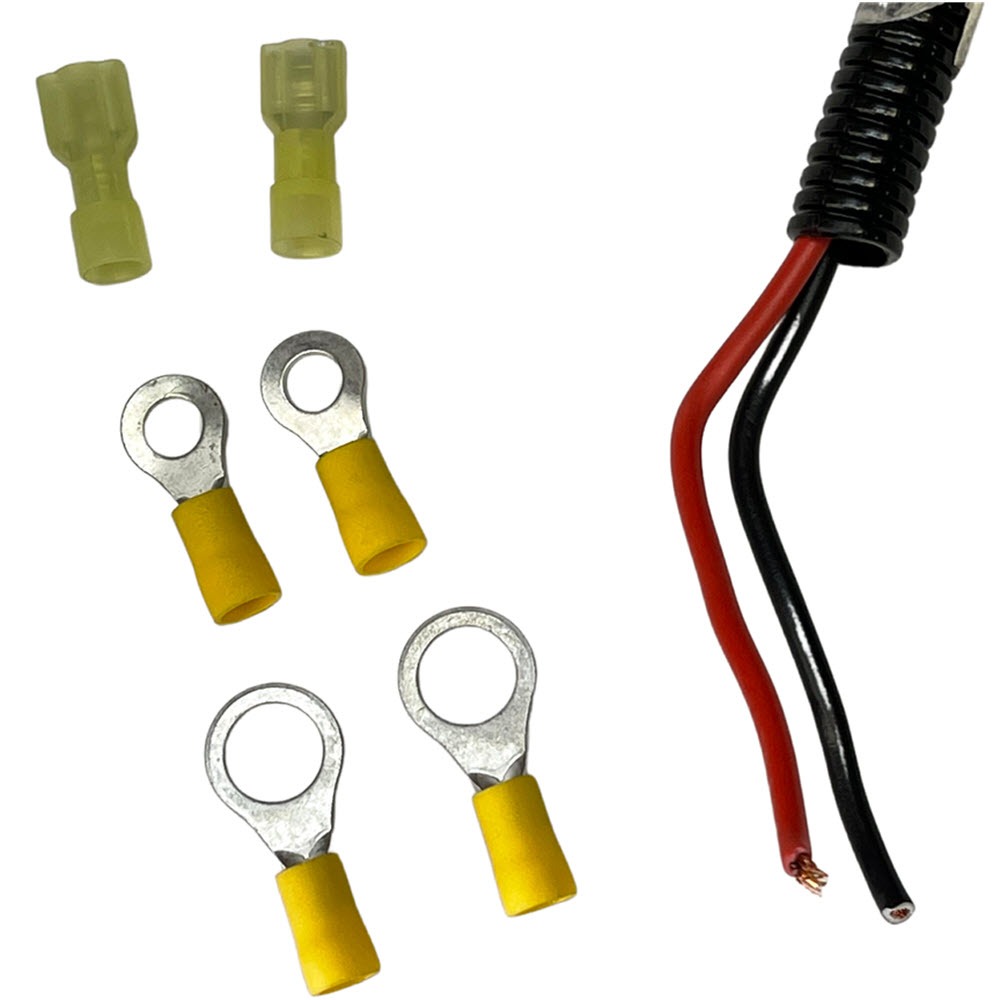
Use the proper connectors to attache the power Cable to the Battery/Power Source
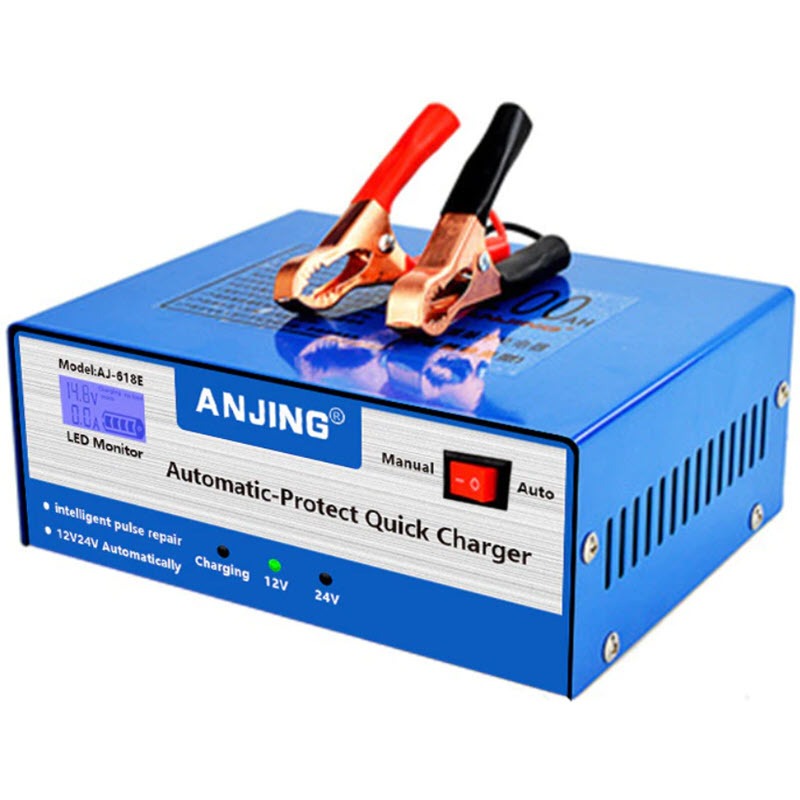
Use a 24v Battery Charger to make the charging easy to manage Item 74-7502
Store your batteries in Battery Boxes
Item 74-7501
Battery and Power Systems shown above - Not Included with the Rotary Brush
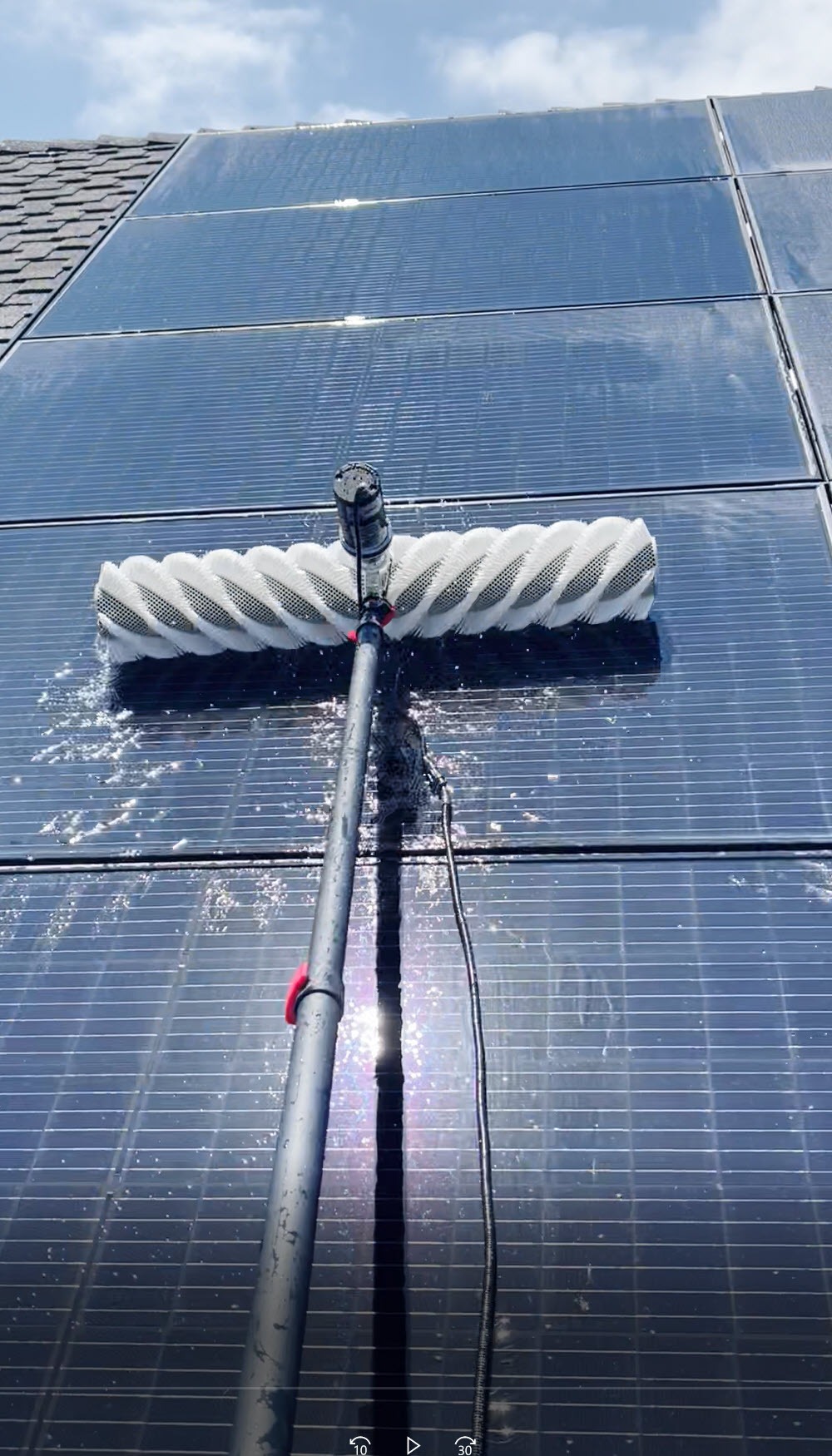
Instructions for Use:
- Connect the brush to the telescopic pole or pressure washer lance.
- Position the unit on the surface to be cleaned.
- Open the water valve on the telescopic lance.
- Turn on the Power Switch to the desired rotation direction
- Begin cleaning the surface.
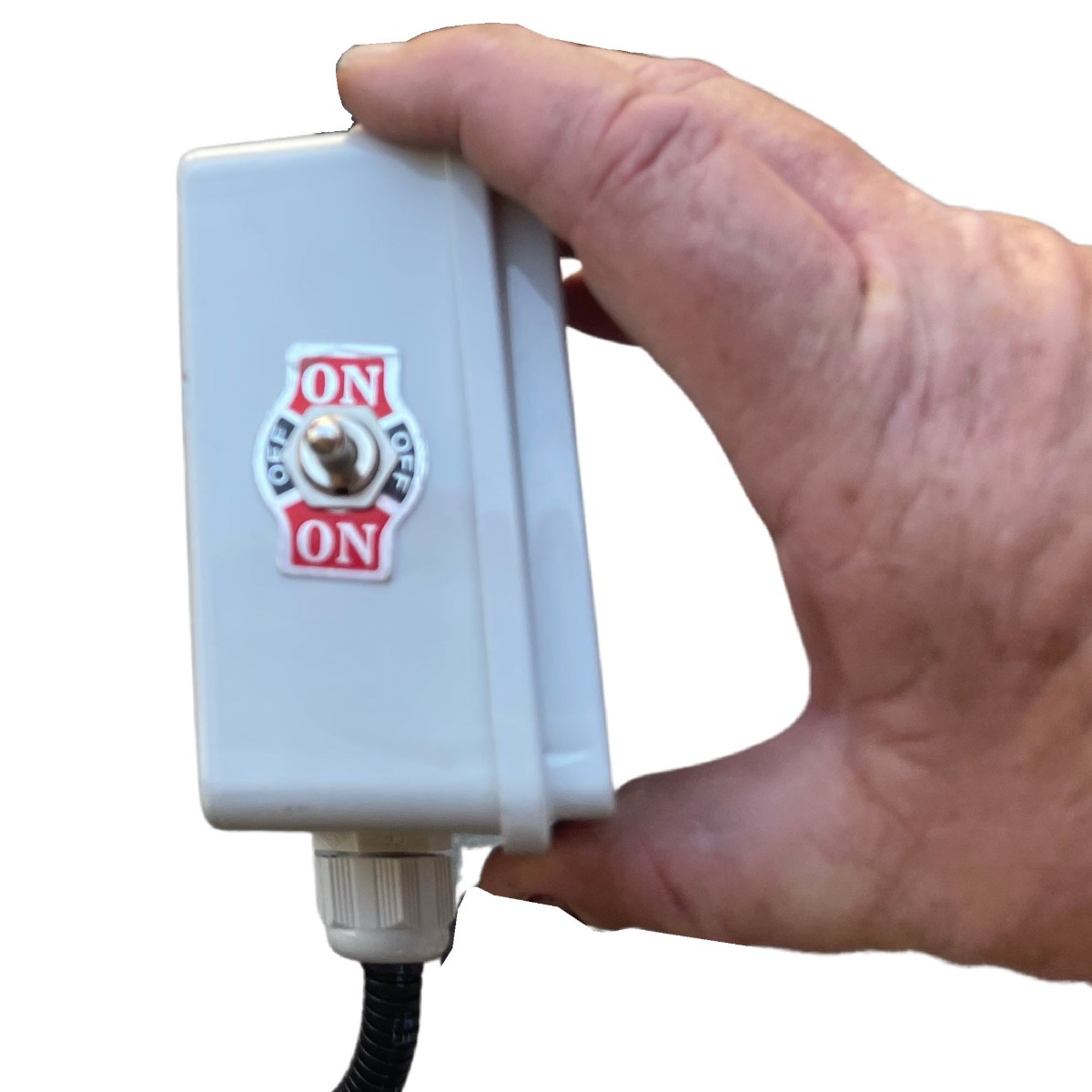 Power Switch allows for forward and reverse rotation of the brush, and power off
Power Switch allows for forward and reverse rotation of the brush, and power off Stopping the Brush - Turning off the cleaning
- Close the telescopic lance’s valve.
- Turn off the Switch from the Power Supply/Battery
- Turn off the water supply
- Open the telescopic lance’s valve to discharge the residual pressure.
Wiring Kit with Directional Switch
This wiring Kit is available as
Item 159-1352 Cable Kit 24v Rotary Brush
The kit contains a 66ft of cable from the battery/power source to the swicth and another 33 ft of cable from the swicth to the brush connector.
The ends that connect to the battery will need to have the correct Terminals attached to accomodate the battery connections.
Wiring Kit Sold Separately 159-1352
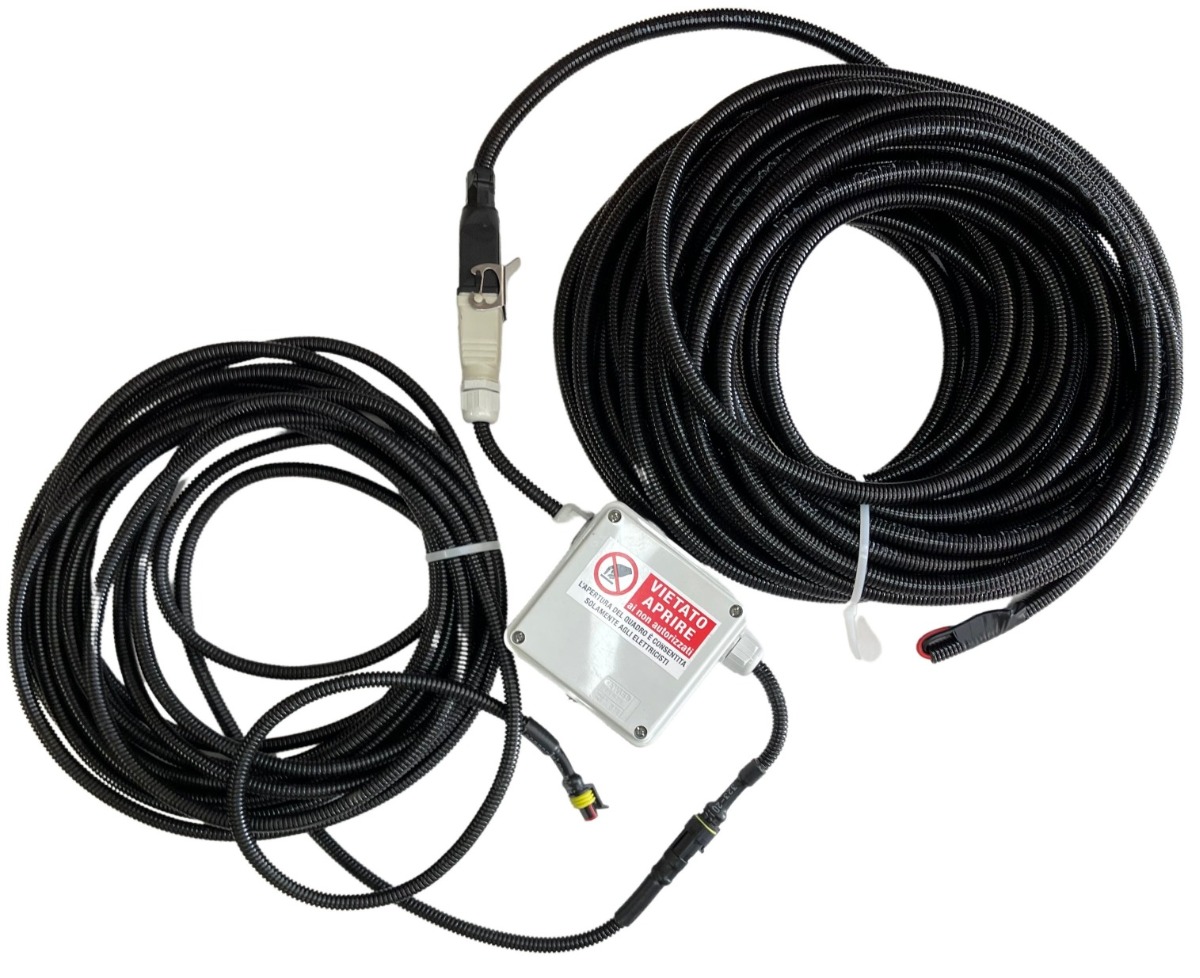

Specifications:
- Width: 31.5 in.(800mm)
- Diameter: 5.9 in. (150mm)
- Weight: 14 lbs (6.3Kg)
- Bristle: 0.6 in. (15mm)
- Attachment: M22 x 14mm Connector
- Current Draw is 100watts nominal (4.1Amps at 24v) use an 8amp capable power supply
- Max. Water Temperature: 104° F (40° C)
Using water on glued parts may cause them to become detached. Do not use the unit on wood floors or parquet that are not well-sealed.
Be careful when cleaning doors, parquet, painted surfaces or surfaces coated with synthetic products, and aluminum panels.
Before using the brush, we advise performing a test on a portion of the surface that is not in view, to prevent damage or alterations during cleaning.
PRODUCTS TREATED – HANDLED OR GENERATED
Verify in the photovoltaic system’s operating manual the type of brushes that can be used for cleaning it, so as not to cause abrasions on the panels’ film.
It is important to avoid all operating situations that could cause repeated and unexpected stops of the brush’s rotation, such as those specified below:
- In the case of surfaces comprised of panels, the maximum distance between them must be 3 cm to prevent the unit from dropping into the empty space between one panel and the next.
- The surfaces must be as free as possible of protruding parts such as long screws, brackets, and terminals, which could obstruct brush rotation or rharm the bristles.
- This is a low water pressure brush, water can be from the tap, or one of many water pumps and water boost pumpes. Generally less tan 100PSI
- When not in operation, never allow the unit’s weight to rest on the rollers’ bristles so as not to bend them when resting.
